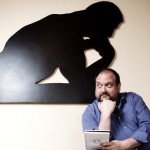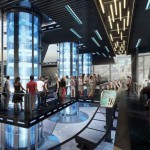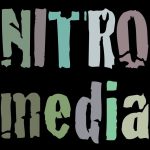oday we sat down with Dave Cobb, the Senior Creative Director for Thinkwell Group and asked him 10 questions about himself, his career and the evolution of theming industry.

BTT: What is the hardest part about being the Creative Director for a company like Thinkwell Group and do you prefer to maintain a more directing role or a more hands-on role?
DC: The hardest part, frankly, is just keeping up with the staggering amount of talent that encompasses our staff. We tell all of our clients that “everyone is creative” at Thinkwell – and it’s the truth. Good ideas and creative solutions can come from anywhere, so every Thinkwellian has an equal part in the outcome of our work. Our process doesn’t separate into silos of “creative” and “technical” and “management” – we work hard to make sure that the different disciplines in our building all work towards a shared creative goal. My job then becomes a process of keeping all those great ideas on track and moving forward – seeing the “big picture” creatively, and making sure that everyone has the inspiration and direction they need to fill in their particular details. So it’s really not a question of deciding between a “directing role” or more “hands-on” – it’s one and the same, really.
BTT: What was your favourite gag that you have created?
DC: I’m particularly proud of a tiny little epilogue at the end of “Men in Black: Alien Attack” at Universal Studios Florida – after the ride is over, and you’ve had your memory “wiped” of the experience, there’s a little window near the exit that shows a shadow of one of the cranky “worm aliens”, complaining about his job pushing buttons in a behind-the-scenes control room, commenting on tourists as they walk by. It’s one of those “blink-and-you’ll-miss-it” gags that fans eventually notice after a couple of rides, and is a fun little “wink” that fits perfectly in the world of MIB. Plus, it’s ridiculously simple, just a standard CRT monitor on a cart, behind the frosted-glass window.
BTT: You can go back in time and change or alter one project. What would it be and why?
DC: To some designers, no project is ever really finished. We’re an industry based on “what if?” – so it’s sometimes hard to get to that moment of “pencils down”. Left to my own devices, I’d probably tinker things to death – so opening deadlines are usually a good thing for me.
Much like live theater, we really don’t know what works and what doesn’t in our work until it gets in front of an audience, which is an equal combination of nerve wracking and thrilling. Sometimes the risks pay off for the audience, sometimes they don’t – and sometimes the things that don’t work are too difficult or expensive to change once the attraction is open. So, you have to make smart decisions from the beginning – if you have a few risky creative decisions, you’d better balance them with a ton of additional proven ideas too, so the audience (and your client) doesn’t get the short end of the stick.
BTT: You worked in the film industry, and then moved to training in theme parks before becoming a show writer/designer. What led you to the Theming Industry?
DC: Put simply, I got really, really lucky. I started as a tour guide at Universal Studios right out of high school, thinking I’d eventually work in film development & production. I loved working on the lot, in particular getting to see Hill Valley every day – because “Back to the Future” was one of my cinematic obsessions, which I’d seen dozens (if not hundreds) of times.
In the Fall of 1991, I took a trip to the then-new Universal Studios Florida theme park in Orlando. In particular, I was excited to see “Back to the Future: The Ride”, which had just opened. My twenty-one-year-old head exploded with just how freaking cool that ride was, from the huge scope & scale of the film to the way the story expanded upon the original mythology. I must have ridden it about twenty times during that trip, and went home giddy.
Soon enough, I found out that BTTF was going to be built at the Hollywood park. I called in every favor I could from all the executives that I gave VIP tours to, practically begging for a chance to see inside MCA Planning & Development (now called Universal Creative — the folks who create all the parks & attractions). I was really just interested as a fan at that point, but my perseverance paid off. Eventually I got some face-time with one of the project directors, and managed to spew out everything I knew about the ride and the movies in a blur of unprovoked nerdity over the course of what seemed like hours, but I’m sure was only a few embarrassing minutes.
I either scared or impressed him, because a few days later I was offered a two-year job as Assistant Project Coordinator. Granted, I was just a grunt doing odd jobs like copying, filing, and running errands. But my initial geekery & park operations experience paid off, as I was slowly given nerdy little duties like laying out the queue line, placing props, planning out the themed & operational signage, assisting with motion-base programming & audio mixing, designing the crew swag, leading press & media tours, and being a “voice of authority” when it came to the BTTF universe. I even got to meet Bob Gale, co-writer and producer of the films — he had an office on the Universal lot, so I snuck him onto numerous test-rides before we opened.
It was a dream job. It didn’t pay much more than my minimum-wage studio guide salary, but I would have done it for free. By the time the ride opened, lo and behold, I’d had a crash-course in location-based entertainment design and large-scale construction projects. It was a real eye-opener, showing me that this mysterious industry that I had previously chalked up as being a mythical far-off realm of designers and engineers, also had room for nerdy, writerly-minded folks like me to learn and grow.
BTT: What is worse for a project, running out of money or running out of time?
DC: Yes.
In all seriousness, money and schedule aren’t our enemies – they’re our business. Good creativity doesn’t require an unlimited budget or endless schedule. If you’re a smart designer and collaborator with your client and team, time and money will be on your side.
BTT: How do you feel the theming industry has changed over the last 10 years and do you feel it has been for better or worse?
DC: It’s evolved past just the big players like Disney and Universal. Just as the movie industry started as big studios and evolved into smaller independent cinema, you’re seeing a similar change in themed entertainment design. The tools and techniques for innovative experiences don’t only come from the biggies now – all sorts of real-world experiences inform our industry, from the collaborative art of Burning Man to the immersive participatory theatre of Broadway’s Sleep No More to the interactive & pervasive worlds of Alternate Reality Gaming & Transmedia Storytelling. Every day, I see a cool Kickstarter idea or project from Maker Faire that inspires me – the tools and technology for innovation are becoming cheaper and more readily available every day.
All of this makes our industry better, because we have more tools to choose from that are changing faster than we can imagine ways to use them – but it’s also worse, because audiences are changing just as fast, and their expectations are very sophisticated. The trick is not to fall for gimmickery and technological snake-oil – the emotional response from our audiences is most important, and always will be.
BTT: What has been your biggest challenge so far and how was it overcome?
DC: Figuring out what I want to be when I grow up.
Truthfully, learning how to truly collaborate and thrive in a team environment. I was lucky in that I was given some extraordinary opportunities very early on, at a very young age, to be part of some very big projects — and because of their scope and scale, I really saw that it’s all about successful collaboration. There is an art and artistry to our craft – but it’s not like being a fine artist where it’s all about a singular vision. It’s true of any creative industry, really – movies, theater, advertising, videogames, you name it – that the outcome is greater than the sum of its parts. It takes lots of focus, a lot of listening, and creative leadership that isn’t top-down.
BTT: What is your favourite attraction or themed item that you did not work on?
DC: The Wizarding World of Harry Potter is a gorgeous, inspiring, exciting bit of literary and cinematic simulacrum that makes me devolve into an eight-year-old every time I visit. And it’s not just the technical whiz-bang of the marquee dark ride, either – which is amazing – it’s the thoughtfulness, intimacy, textures, and human scale of the environment as a whole. It lives and breathes through every detail and every employee interaction. It sounds cliché, but it really is like stepping into the books and movies. I sort of want to live there.
I also really miss “Cranium Command” at Epcot. It was a perfect example of what that park was designed to do – inspire, educate and entertain. It managed to be hilariously funny, yet also informative and oddly sweet. I’ve stolen from its quirky tone and sense of humor dozens of times in my own projects.
BTT: In your role you have to be able to wear many hats. What is the one hat that you are not able to wear, and who do you rely on most to fill that role?
DC: I’m terribly unorganised, and I work on literally dozens of projects at once at Thinkwell — so the unsung and downright Herculean job of our project coordinators and project managers is to keep the process chugging forward. They juggle a staggering amount of client communication, internal scheduling and meetings, and creative cat-herding. They’re our secret weapon.
DC: Theming is about more than just great scenery, beautiful landscaping, and cutting-edge technology – it’s about using creative storytelling tools that elicit emotions from your audience, in a cohesive system of experience from initial entry to exit back into the real world. From beginning to end, effective theming should encourage guests to explore, enjoy, and return to places and experiences not only because of how they look, but because of how they make them feel.











